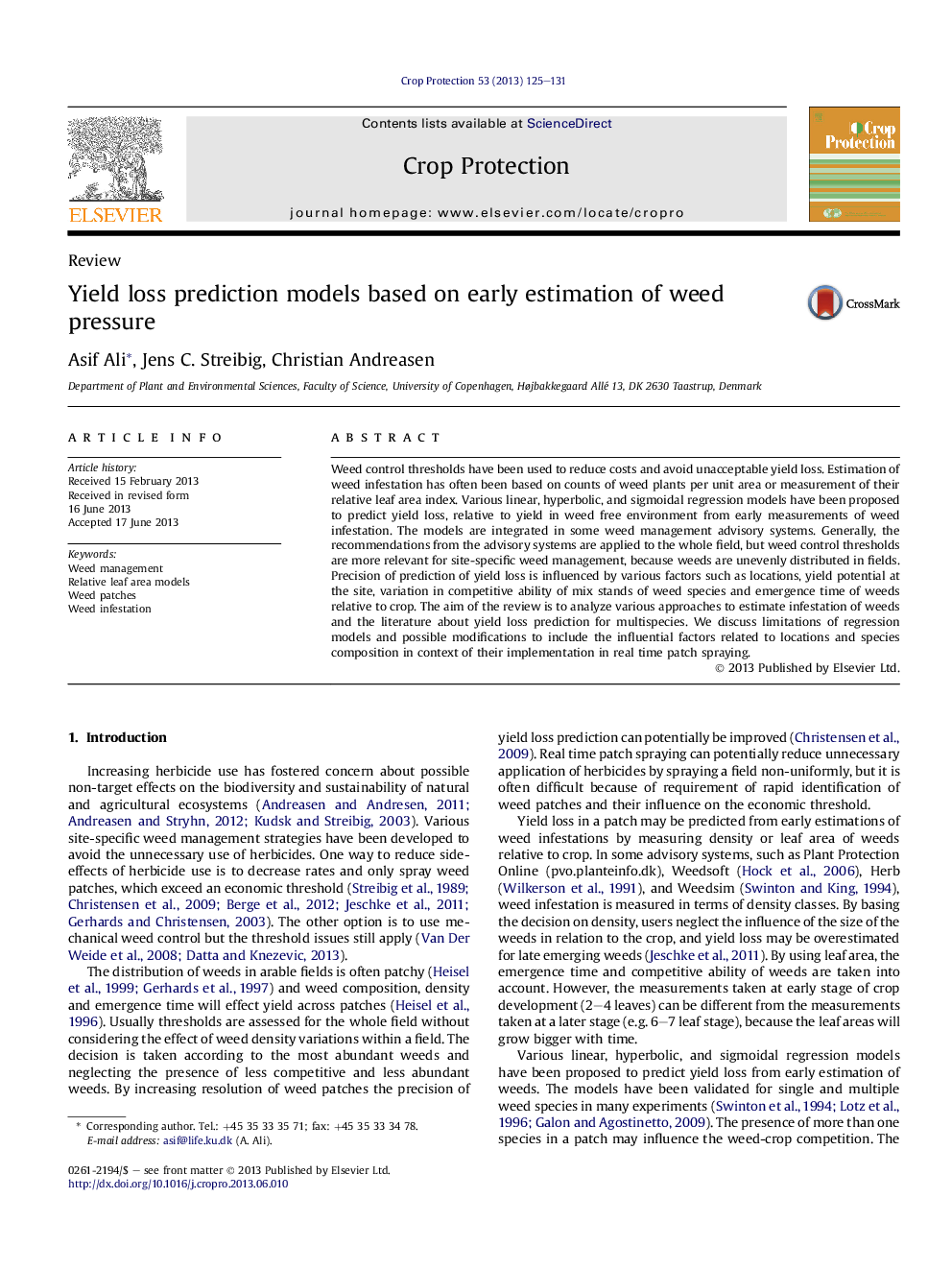| Article ID | Journal | Published Year | Pages | File Type |
|---|---|---|---|---|
| 4506031 | Crop Protection | 2013 | 7 Pages |
•We discussed density and relative leaf area as measure of weed infestation.•We reviewed linear, sigmoidal and hyperbolic models for prediction of yield loss.•We suggested possible extensions of relative leaf area models for multispecies.•Graphical interpretation of parameters of yield loss prediction models.
Weed control thresholds have been used to reduce costs and avoid unacceptable yield loss. Estimation of weed infestation has often been based on counts of weed plants per unit area or measurement of their relative leaf area index. Various linear, hyperbolic, and sigmoidal regression models have been proposed to predict yield loss, relative to yield in weed free environment from early measurements of weed infestation. The models are integrated in some weed management advisory systems. Generally, the recommendations from the advisory systems are applied to the whole field, but weed control thresholds are more relevant for site-specific weed management, because weeds are unevenly distributed in fields. Precision of prediction of yield loss is influenced by various factors such as locations, yield potential at the site, variation in competitive ability of mix stands of weed species and emergence time of weeds relative to crop. The aim of the review is to analyze various approaches to estimate infestation of weeds and the literature about yield loss prediction for multispecies. We discuss limitations of regression models and possible modifications to include the influential factors related to locations and species composition in context of their implementation in real time patch spraying.
